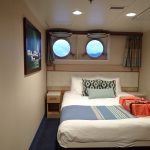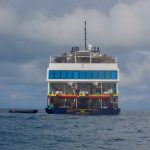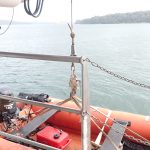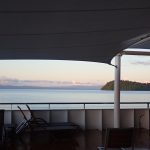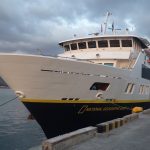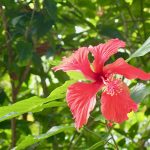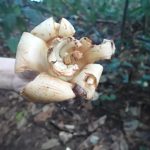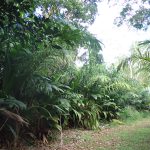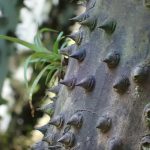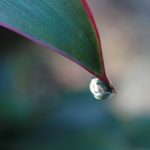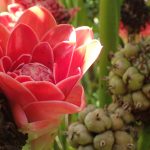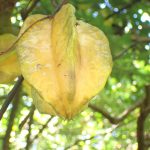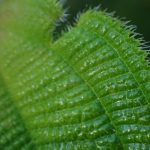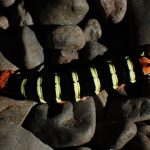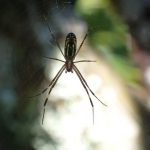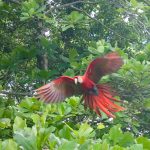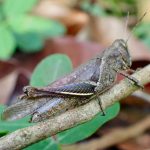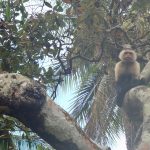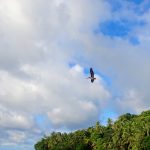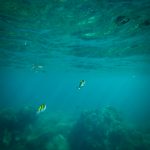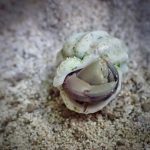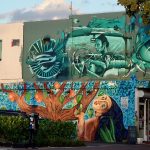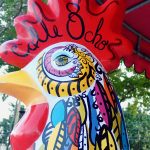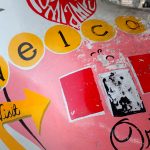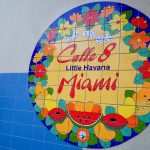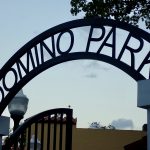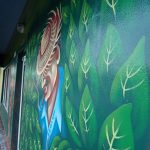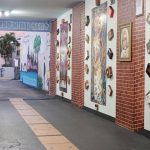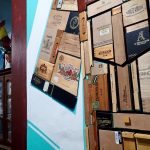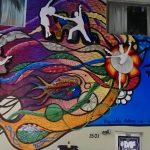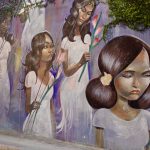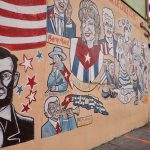I am so sorry! I haven’t been able to upload pictures using the Wifi on the ship, so I will update the itinerary post below with what we’ve been doing instead. Once I am able to upload photos, I will!
Costa Rica & Panama
Day 1: Embark
On Sunday, we traveled from San Jose to Puerto Caldero in order to embark the ship, the National Geographic Quest.
Day 2: Punta Caletas & Corcovado National Park (Osa Peninsula)
Morning: Today, I went on a 3-mile hike that began at the beach and ended in Drake’s Bay. We walked along a trail just inside the rainforest from the beach. On this trail, we saw so many animals: a sloth, howler monkeys, white-faced capuchin monkeys, basilisks, a blue morpho butterfly, leaf-cutter ants, a toucan, a hawk, a scarlet macaw and a gold-orb spider.
Afternoon: In the afternoon, I choose to do a shorter hike (1.5 miles) to a waterfall and swimming area. This was a bit deeper into the rainforest and along the way, we discussed plants such as strangler figs and lianas and saw spider monkeys and yellow-throated toucans.
Day 3: Playa Blanca (Osa Peninsula)
Today we visited with locals to learn more about their family businesses. In the morning, we traveled 45 minutes by van to speak with Juan and learn about his conservation efforts on his land, which were formerly the site of gold mining. He also did a gold panning demonstration for us. Next, we visited El Trapiche, a sugar cane mill to learn how sugar cane is used to make various items: miel, or a sugar syrup for making agua dulce; tapa dulce, a block of sugar similar to panela; and sobado, a candy made with the sugar cane syrup, nuts and evaporated milk.
After lunch, a local children’s folkloric dance group came to demonstrate several typical dances. Then, in the afternoon I visited a heart of palm plantation to learn from a family who are the remaining heart of palm growers in the area. Luis was our tour guide and his mother Aida and father Simon spoke with us about the history of heart of palm production in the region and then demonstrated how to grow the palmito and then to harvest the heart of palm.
Day 4: Casa Orquídeas and LAST
Morning: This morning, we visited Casa Orquídeas, a private botanic garden located in Golfo Dulce. I practiced taking close-up photos of flowers and spiders and learned a bit more about some of the local plants. I was also interviewed today for the ship’s recap video, which is shown at the end of the expedition.
Afternoon: In the afternoon, we were visited by a researcher from LAST, the Latin American Sea Turtles organization. They are a non-profit that focuses on sea turtle rescue and conservation, as well as the conservation of their ecosystems. We went ashore at Playa Blanca to see how a turtle is measured once it is caught and then we watched it be released into the ocean.
Day 5: A New Country!
Today, we woke up in Panama! In the morning, we visited Granito de Oro, one island that makes up the Parque Nacional Coiba. We swam and I did something that I have only tried one other time — snorkeling! I saw some coral, fish, and moray eels, and others who went a bit farther out into the reef saw parrotfish, sea turtles and a whitetipped reef shark!
We spent the afternoon on board and listened to a lecture about the history of Panama, as well as about the coral reef we visited in the morning. I also went to the bridge to meet the officers and got to hear about how they navigate and chart courses.
Day 6: Isla Boná, Isla Taboga and the Panama Canal
Morning: We took zodiac tours around Isla Boná and Isla Otoque to view the rookeries, or nesting grounds, of many different types of seabirds. We saw frigatebirds, blue-footed boobies and pelicans, just to name a few.
Afternoon: In the afternoon, we stopped at Isla Taboga, also known as the Island of Flowers. We visited Iglesia San Pedro, one of the oldest churches in the Americas, including walking up its very narrow staircase to the small bell tower. Then, we were able to wander the island’s streets to see murals, the beach, and especially the main large ships waiting in a line to enter the Panama Canal.
Evening: We began our transit through the Panama Canal, completing the locks at Miraflores and Pedro Miguel. We anchored in Lago Gatún overnight near Barro Colorado Island, an island used by the Smithsonian Tropical Research Institute for research.
Day 7: Gamboa, the Panama Rainforest Discovery Center and the Panama Canal
Morning: Some guests visited Barro Colorado Island to hike its trails or tour it via zodiac. I chose to take a tour in a local boat through Lago Gatún on the way back to Gamboa in order to visit the Panama Rainforest Discovery Center. During our time on the trail, we saw howler monkeys, coati, fire ants, toucans, a sloth, and a slaty-tailed trogon. We also climbed the observation tower to better understand the differences that exist on the forest floor versus up at the canopy.
Afternoon: We returned to the Quest and waited for our turn to go through the locks on the Pacific side of Panama. Our turn did not take place until 12:30 am. We then traveled to our dock in Colón.
Day 8: Disembark
Before flying on to San José, my co-explorer teacher and I had a layover in Miami. Here are some photos of the many murals and artwork found in Little Havana! Click on the picture to view them in a slideshow with better resolution.
Learn more about the Grosvenor Teacher Fellow program, a partnership between National Geographic and Lindblad Expeditions:
